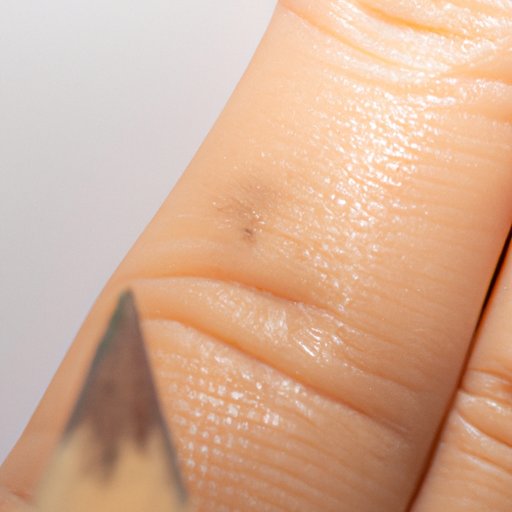Introduction
Ingrown hair is a common problem that can occur when hair follicles curl or grow back into the skin. This can cause irritation, redness, pain, and even infection. The purpose of this article is to provide step-by-step instructions on how to remove ingrown hair safely and effectively.
What Causes Ingrown Hair?
Ingrown hair can occur due to several reasons, including dead skin cells, improper hair removal, and curly hair type. Dead skin cells can clog the hair follicles, trapping the hair inside. Improper hair removal, such as shaving against the grain, can also cause the hair to curl back into the skin. Curly hair type is more prone to ingrown hair, as the hair tends to curve back into the skin instead of growing straight out.
To prevent ingrown hair, it is important to exfoliate regularly to remove dead skin cells. Avoid shaving against the grain and use a sharp razor to cut hair at the surface level. If possible, opt for hair removal methods that pull hair out by the root, such as waxing or sugaring, as this can reduce the likelihood of hair growing back into the skin.
How to Physically Remove Ingrown Hair
If you already have an ingrown hair, there are several methods to remove it safely and without causing further irritation.
Using a Clean Needle or Tweezer
Before removing the ingrown hair, sterilize a needle or tweezer with rubbing alcohol. Gently lift the hair out of the skin with the needle or tweezer. Be careful not to dig into the skin too deeply or pull the hair out forcefully, as this can cause further damage and irritation. Once the hair is successfully removed, wash the area with warm water and antibacterial soap.
Warm Compresses
Soak a clean cloth in warm water and place it over the affected area for 10-15 minutes. This will help soften the skin and the hair, making it easier to remove. Gently lift the hair out of the skin with a needle or tweezer, following the same steps as above. Remember to sterilize the needle or tweezer before use to prevent infection.
Sugar Scrub
Mix a tablespoon of sugar with a tablespoon of olive oil to create a paste. Rub the paste gently over the affected area in a circular motion. The sugar will exfoliate the skin, while the olive oil will moisturize and soothe the skin. Rinse off the paste with warm water and wash the area with antibacterial soap.
Risks of Picking or Squeezing Ingrown Hairs
Picking or squeezing ingrown hairs can lead to infection, scarring, and further irritation. It is important to avoid using your fingers or sharp objects to remove ingrown hairs, as this can cause further damage to the skin. If you notice signs of infection, such as increased redness, pus, or fever, seek medical attention immediately.
Natural Remedies
There are several natural remedies that can help soothe redness or inflammation caused by ingrown hair.
Tea Tree Oil
Apply a few drops of tea tree oil directly to the affected area. The antiseptic properties of tea tree oil can help reduce inflammation and prevent infection. This remedy is especially beneficial for those with oily or acne-prone skin.
Aloe Vera
Cut an aloe vera leaf and apply the gel directly to the affected area. Aloe vera has anti-inflammatory properties that can help reduce redness and soothe the skin. This remedy is especially beneficial for those with dry or sensitive skin.
Address Concerns for Sensitive or Delicate Skin
If you have sensitive or delicate skin, it is important to take extra precautions when removing ingrown hair. Avoid using harsh exfoliants or scrubs that can further irritate the skin. Opt for hair removal methods that are less likely to cause irritation, such as sugaring or laser hair removal. After removing ingrown hair, apply a gentle moisturizer or aloe vera gel to soothe the skin.
Conclusion
Removing ingrown hair safely and effectively is a simple process that requires gentle care and attention to detail. By following the tips outlined in this article, you can prevent ingrown hair and treat existing ingrown hair without causing further damage or irritation to the skin. Remember to always seek medical attention if you notice signs of infection or severe irritation.
Call to Action
If you are struggling with ingrown hair, follow the tips outlined in this article to remove ingrown hair safely and effectively. If you have any concerns or notice signs of infection, seek professional advice from a dermatologist or healthcare professional. For further reading on hair removal and skin care, check out our recommended resources below.
